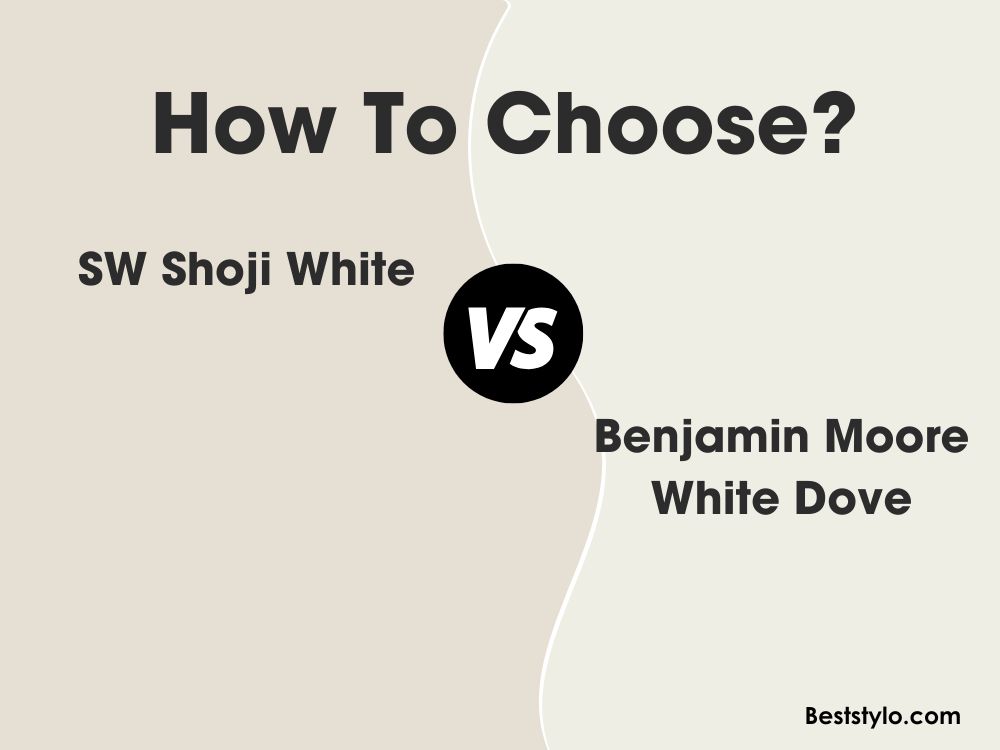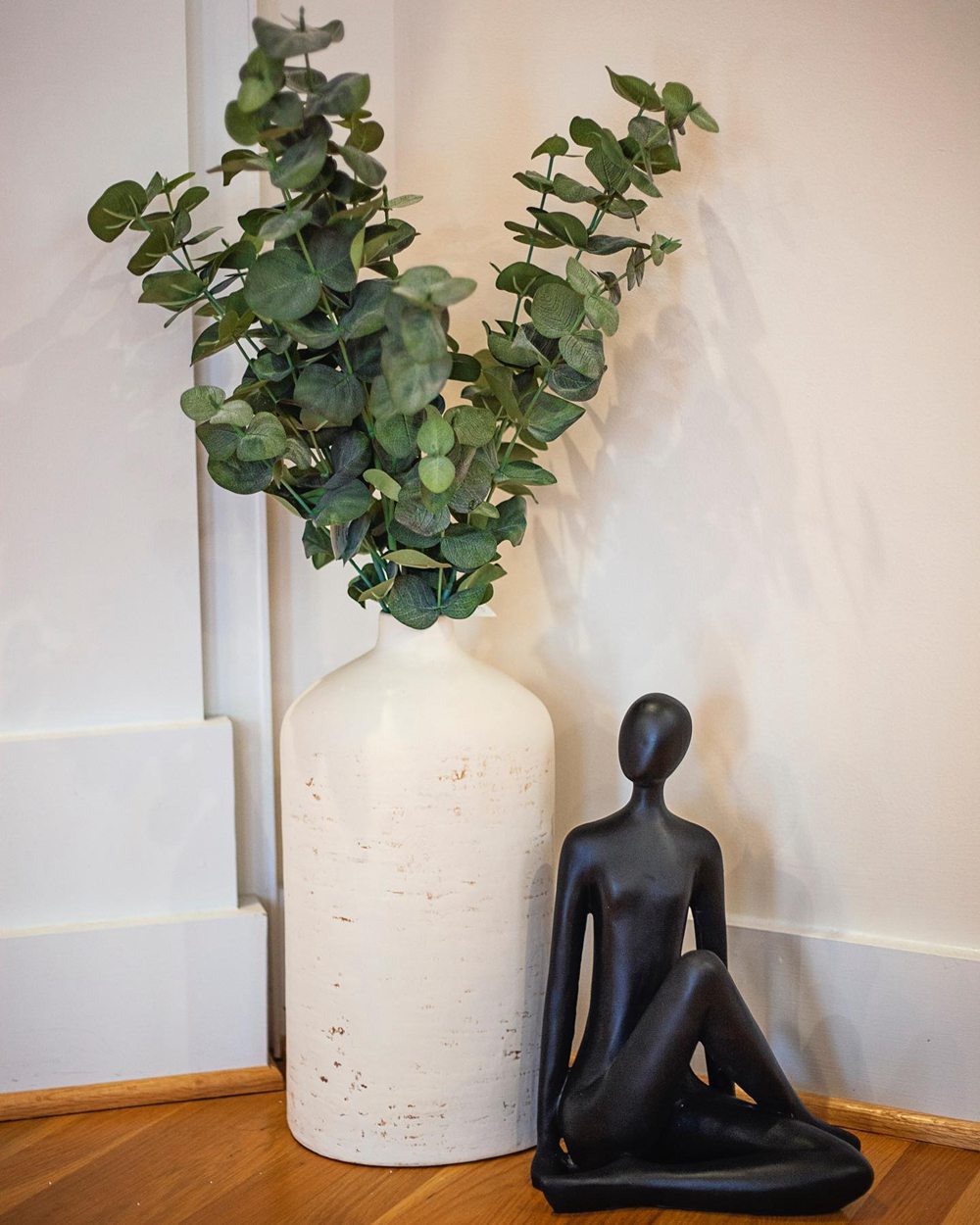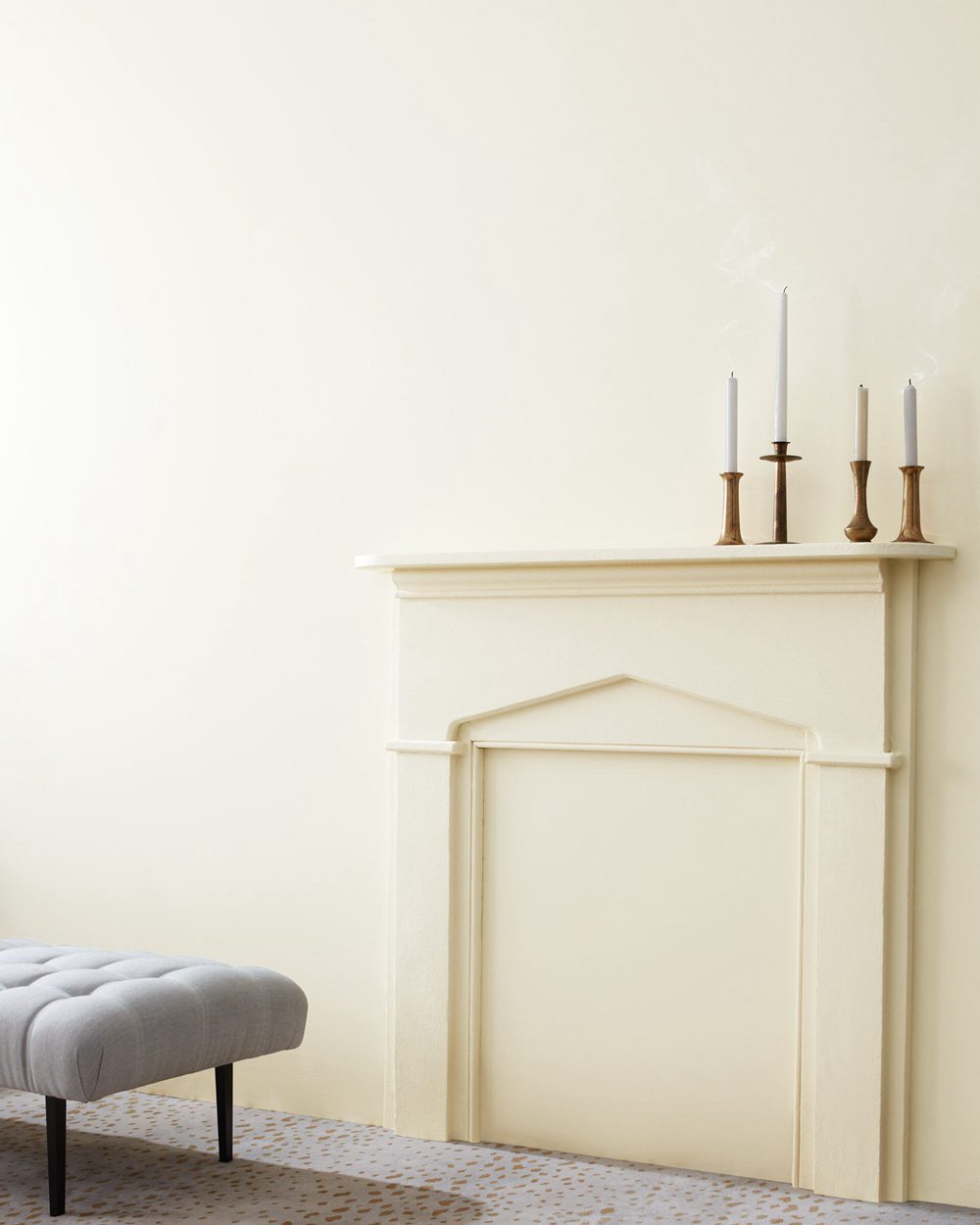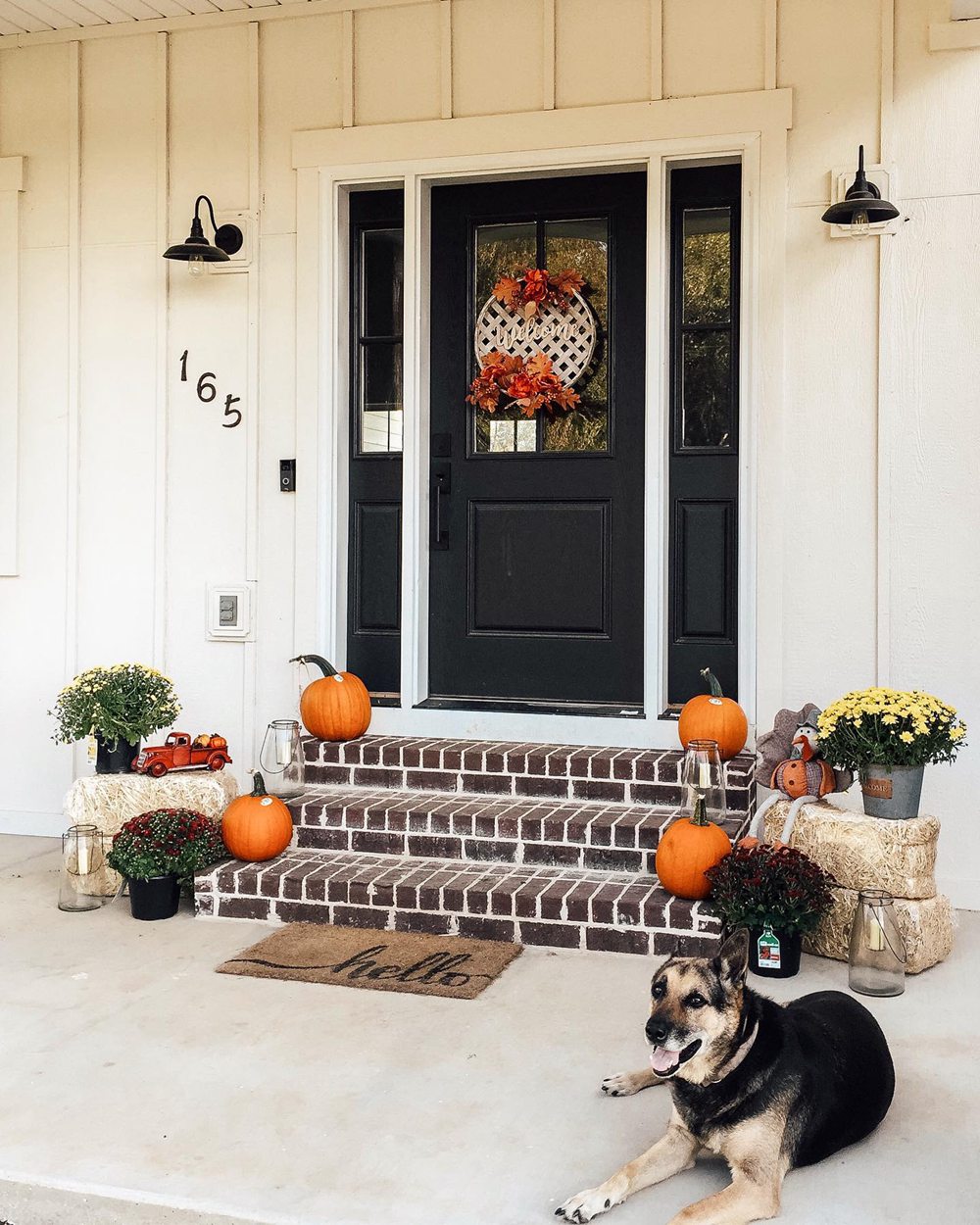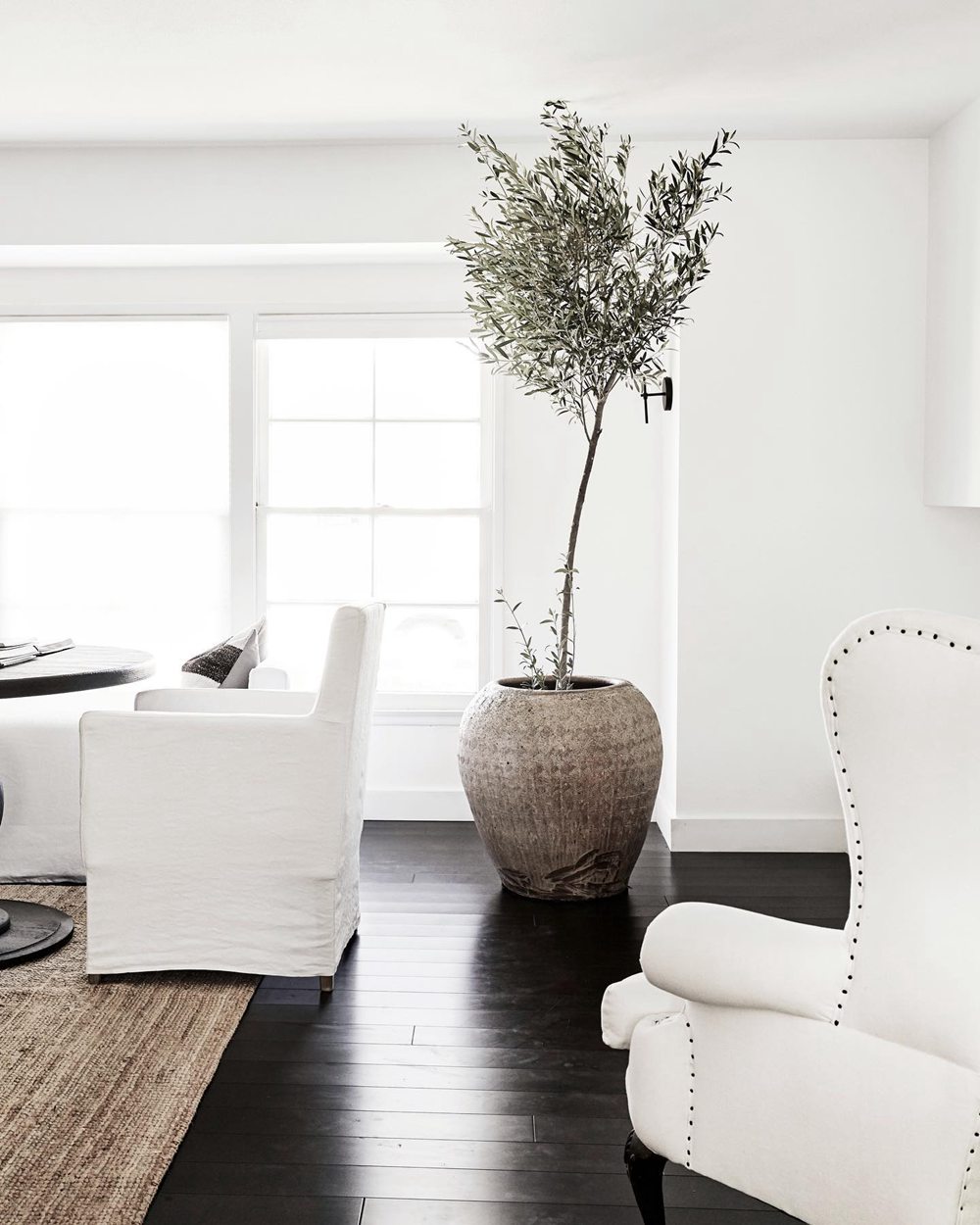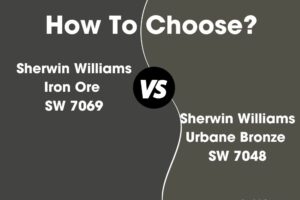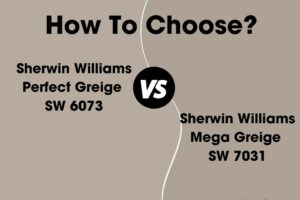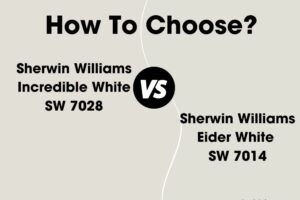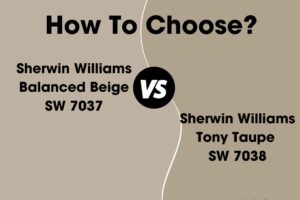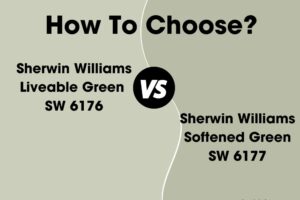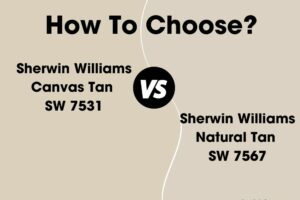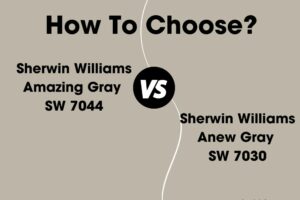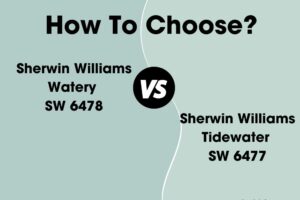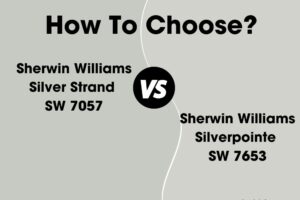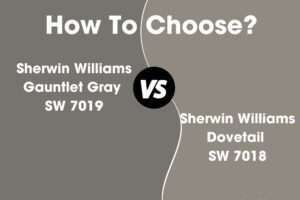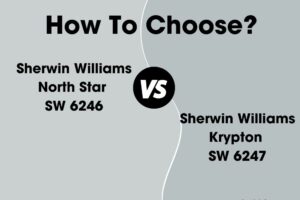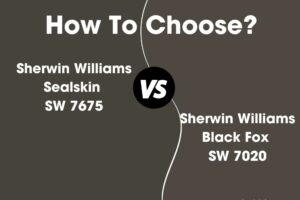When searching for the perfect clean white paint color, two popular options are Sherwin-Williams Shoji White and Benjamin Moore White Dove. At first glance they may appear similar, but differences emerge upon closer inspection.
In this article, we’ll analyze Shoji White and White Dove in depth. We’ll compare undertones, light reflectance, real photos, and ideal room pairings. Read on to determine whether the coolness of Shoji White or the versatility of White Dove makes the best bright white paint for your home.
Table of Contents
Key Differences Between Shoji White and White Dove
Before diving into the nuances, here are the main differences between Shoji White and White Dove:
- Undertones – Shoji White has a hint of cool gray, White Dove is a true white
- Light Reflectance – Shoji White has an LRV of 74, White Dove has an LRV of 83.16
- Use – Shoji White flatters cool color schemes, White Dove complements all colors
- Rooms – Shoji White ideal for modern homes, White Dove classic for any home style
Now let’s explore Shoji White and White Dove more closely and see how they compare.
Sherwin-Williams Shoji White 7042
With its barely-perceptible gray tint, Shoji White SW 7042 reads as a gorgeous, crisp backdrop. This versatile white makes spaces feel open and airy.
Here are some key details about Shoji White:
- LRV: 74
- Undertones: Hint of cool gray
- Sheen: Available in all finishes
- Rooms: Whole home, especially modern spaces
- Pairings: Grays, blues, blacks
Shoji White is often described as a “cleanup white” meaning it cleanses palettes of any cream or yellow. This bright white paint has the slightest whisper of gray. In certain lights, the subtle cool undertone is detectable. In other lighting conditions, Shoji White appears as a true optic white.
The subtle cool influence sets Shoji White apart from many other white paint colors that take on a warm or yellowed cast. With an 74 light reflectance value, Shoji White maximizes brightness.
Shoji White works beautifully as a whole home white to carry a crisp, consistent look from room to room. It also pairs elegantly with both cool and warm accents making it widely versatile:
- Sherwin-Williams Agreeable Gray
- Sherwin-Williams Mindful Gray
- Sherwin-Williams Sea Salt
- Black and wood tones
Use Shoji White to make rooms feel clean, airy, and bright. It works in any space but excels in these areas:
- Living rooms
- Bathrooms
- Kitchens
- Hallways
- Modern homes
Benjamin Moore White Dove OC-17
A true, optic bright white, White Dove OC-17 provides a gorgeous neutral backdrop for colors to shine. This versatile white is enormously popular.
Here are some key details about White Dove:
- LRV: 83.16
- Undertones: True white
- Sheen: Available in all sheens
- Rooms: Any room, universally flattering
- Pairings: All colors
White Dove is a “true white” meaning it has no discernible undertones. Unlike Shoji White’s subtle coolness, White Dove appears clean and optic under any lighting conditions.
With an 83.16 light reflectance, White Dove provides ample illumination and brightness. The lack of undertones makes this white highly versatile to complement any color scheme. Popular pairings include:
- Benjamin Moore Black Forest Green
- Benjamin Moore Essex Green
- Benjamin Moore Edgecomb Gray
- Any accent color
The adaptability and universal appeal of White Dove makes it an ideal choice for any space. Use it to make rooms feel fresh and bright. It looks beautiful in:
- Living rooms
- Kitchens
- Bathrooms
- Bedrooms
- All rooms and styles
Comparing Shoji White vs. White Dove
Now that we’ve looked at their unique traits, let’s directly compare Shoji White and White Dove:
Light Reflectance
With an LRV of 74, Shoji White reflects a bit more light than White Dove at 83.16 LRV. However, both offer outstanding brightness.
Undertones
This is the key distinction. Shoji White has a subtly detectable cool gray tint, while White Dove is a true neutral white with no undertones.
The subtle coolness makes Shoji White ideal for modern, crisp spaces. White Dove’s versatility suits any style.
Use
Shoji White nicely cleanses walls of any creaminess. White Dove provides a bright backdrop that works with any color accents.
Paint Finish
Both Shoji White and White Dove come in any sheen from flat to high-gloss. They can provide a beautiful crisp finish.
Shoji White vs. White Dove Comparison Chart
Here is an overview of how Shoji White and White Dove compare:
| Paint Color | Shoji White SW 7042 | White Dove OC-17 |
|---|---|---|
| LRV | 74 | 83.16 |
| Undertones | Subtle cool gray | True white |
| Use | Modern homes | Universal |
| Sheen | Any finish | Any finish |
| Style | Contemporary | All styles |
Real Life Photos – Shoji White vs White Dove
To get a better sense of how Shoji White and White Dove compare, let’s look at real life photos of the paint colors:
Shoji White
White Dove
As seen in the photos, White Dove comes across as a touch warmer and brighter while Shoji White reads as subtly cooler and grayer. But depending on lighting, the difference can be very subtle in some environments.
Should I Choose Shoji White or White Dove?
So how do you decide between Sherwin-Williams Shoji White vs Benjamin Moore White Dove for your home? Here are a few tips:
Consider Shoji White if you want:
- A white with a very subtle cool cast
- To cleanse walls of any cream or yellow
- A bright, fresh backdrop for grays and blues
- A versatile neutral for modern spaces
Consider White Dove if you want:
- A pure true bright white
- No undertones to complement all colors
- A universally flattering backdrop
- A timeless white suitable for any style
As with any close paint decision, get samples and test Shoji White and White Dove on your walls. The right white ultimately depends on your goals, architecture, light, and color scheme.
Both of these whites are gorgeous choices that bring beautiful light and brightness into a home.
Ideal Room Pairings
Here are rooms that are well-suited to showcasing Shoji White and White Dove paint colors:
Shoji White SW 7042
- Modern living rooms
- Contemporary kitchens
- Bathrooms
- Dining rooms
- Bedrooms
- Hallways
White Dove OC-17
- Living rooms and dens
- Bedrooms and nurseries
- Bathrooms
- Dining rooms
- Kitchens
- Any room!
Shoji White excels in clean, modern spaces, while White Dove fits any style. But their brightening power makes both whites suitable for any room type.
Decorating Ideas and Color Pairings
Shoji White and White Dove create airy, ethereal backdrops. Pair them with these colors and materials:
Shoji White Color Pairings
- Sherwin-Williams Mindful Gray (gray)
- Sherwin-Williams Sea Salt (blue)
- Sherwin-Williams Pure White (white)
- Black and wood accents
White Dove Color Pairings
- Benjamin Moore Black Forest Green
- Benjamin Moore Essex Green
- Benjamin Moore Edgecomb Gray
- Any accent color!
Varying the undertones of accent colors and materials can create dynamic and elegant room palettes with either white.
Shoji White vs White Dove: Which is Best for Your Home?
So which is the better bright white paint color between Sherwin-Williams Shoji White and Benjamin Moore White Dove? The answer depends on your goals and home’s needs:
Consider Shoji White if you want:
- A white with subtle cool gray undertones
- To remove any cream or yellow cast on walls
- A paint color suitable for modern styles
- Good versatility to work with cool color schemes
Consider White Dove if you want:
- A pure true optic white with no undertones
- To complement and enhance all color accents
- A universally clean and bright backdrop
- A timeless white suitable for any room
While Shoji White may be slightly more versatile for contemporary homes, White Dove provides true neutral brightness.
Get color samples and view in your environment before deciding. Either bright white you choose will provide a clean, ethereal backdrop that lasts for years.
Frequently Asked Questions
Still undecided between Shoji White and White Dove? Here are answers to some common questions:
What are the main differences between Shoji White and White Dove?
The main differences are their undertones and suitability for cool vs warm color schemes. Shoji White has subtle cool gray tones. White Dove is a true neutral white.
Which rooms should I use Shoji White in?
With its barely detectable grayness, Shoji White excels in clean modern spaces like living rooms, kitchens, bathrooms and bedrooms.
What colors go well with White Dove?
Thanks to its lack of undertones, White Dove complements any color scheme beautifully. Popular pairings include deep colors like navy, black, gray and green.
Can I use Shoji White on ceilings?
Yes, Shoji White’s 74 light reflectance value makes it a great ceiling white. It provides brightness without feeling too cool.


